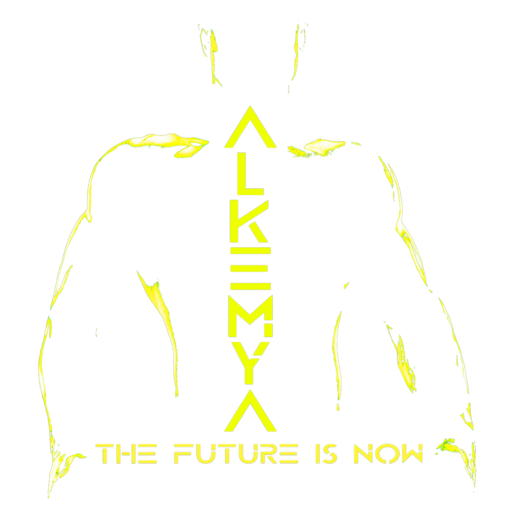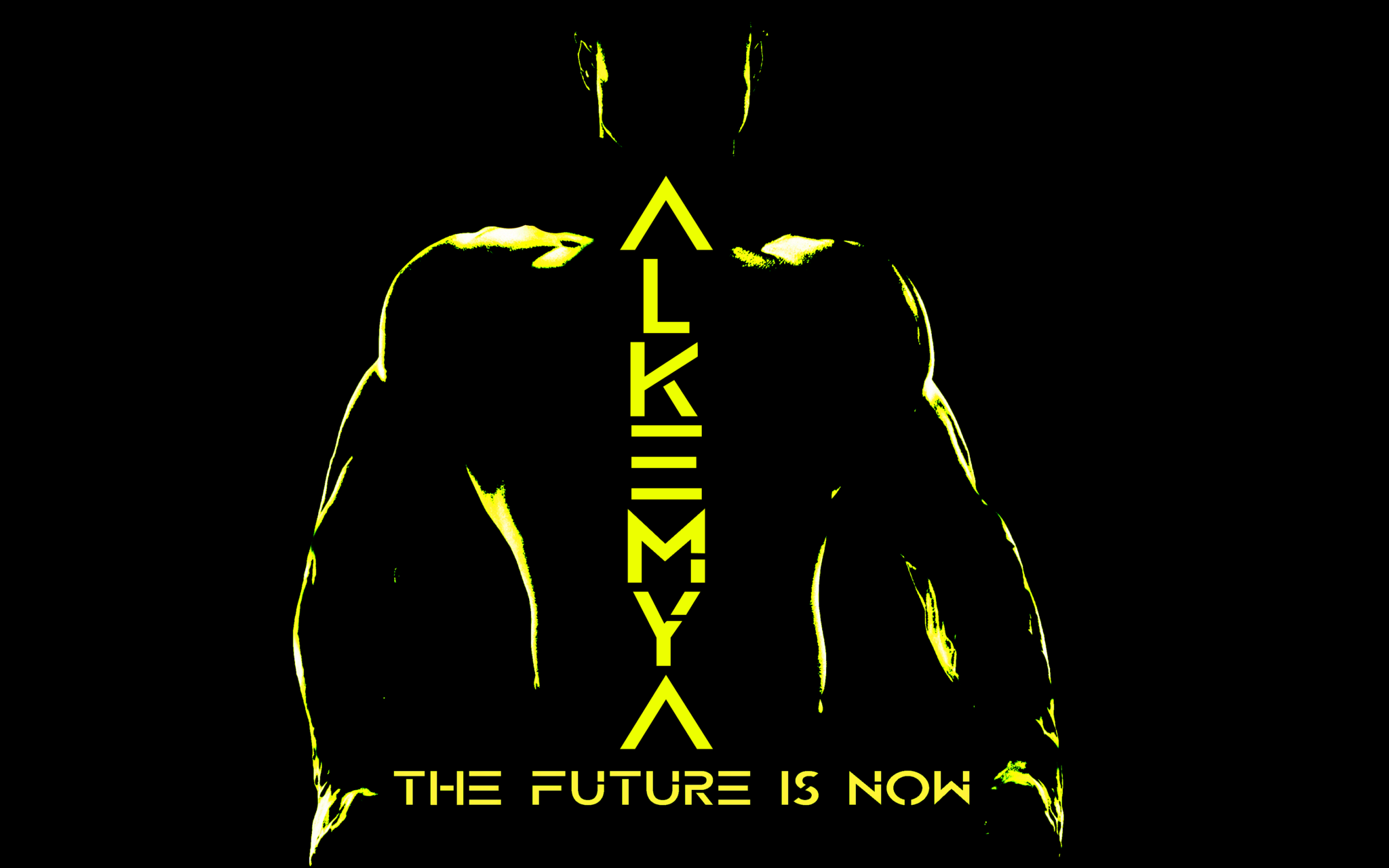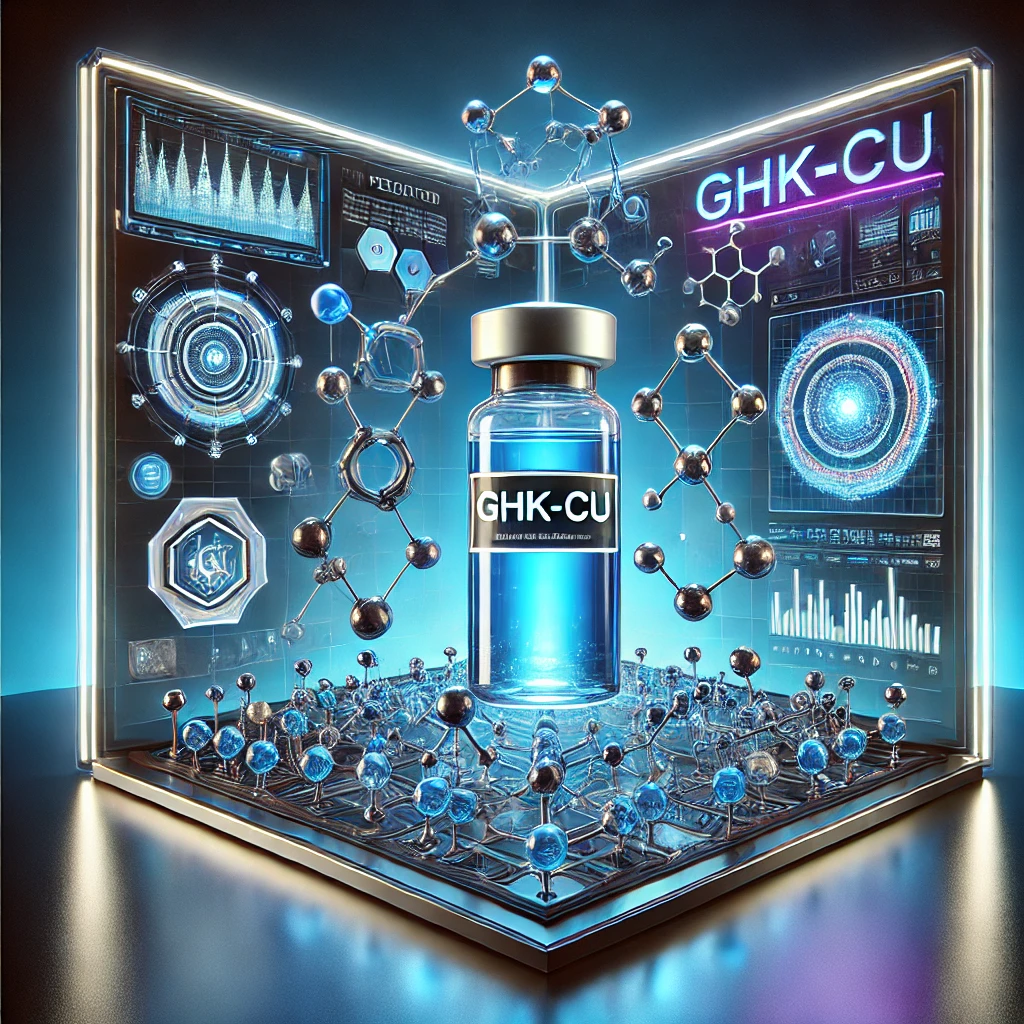Today we’re diving into a peptide that has sparked massive interest in the scientific community, among anti-aging enthusiasts, biohackers, and anyone seeking innovative solutions for skin care, hair health, and overall well-being.
We’re talking about GHK-Cu (Gly-His-Lys-Cu), a copper peptide complex with incredible potency.
We’ve got a lot to cover, so get comfortable and get ready for a journey that will take you from cutting-edge research labs straight into the anti-aging routines of the world’s top biohackers!
1
1. Introduction to GHK-Cu
1.1 What is GHK-Cu?
GHK-Cu is a natural peptide composed of three amino acids (glycine, histidine, and lysine) bound to a copper ion (Cu). Copper, as you might know, is an essential trace element involved in numerous enzymatic and biological processes, from iron metabolism to connective tissue health. When copper binds to the GHK tripeptide, we get a molecule with extraordinary regenerative and antioxidant properties that has gained increasing attention in recent years.
This peptide was first discovered in the 1970s by American biochemist Loren Pickart, who initially identified its role in tissue regeneration and wound healing. Since then, hundreds of studies have highlighted the broad potential of GHK-Cu, ranging from improved skin quality and hair growth to anti-inflammatory and even neuroprotective effects. In short, it’s a true biological “factotum” that couldn’t go unnoticed.
Fun fact: it’s said that Dr. Pickart first got the idea for GHK-Cu after comparing blood samples from younger and older individuals, noticing significant differences in the levels of this peptide — as if it were a “youth marker” that declines with age, suggesting a key role in the aging process.
1.2 Why is everyone talking about GHK-Cu?
At a time when aging research (or rather, anti-aging research) is booming, many scientists are trying to identify molecular factors capable of “turning back the biological clock” — or at least slowing it down. GHK-Cu is emerging as one of the most promising candidates, thanks to its broad range of beneficial effects, supported by a growing body of scientific literature.
Tissue repair: GHK-Cu appears to promote collagen synthesis and other components of the extracellular matrix.
Anti-inflammatory effect: Several studies show it can modulate inflammation and support the healing of wounds and ulcers.
Aesthetic benefits: It reduces wrinkles, hyperpigmentation, and scarring, while improving skin tone and elasticity.
Hair support: It has shown potential in stimulating hair growth and reducing hair loss.
Neuroprotection and systemic anti-aging potential: Preliminary research even suggests a positive impact on brain function.
If all of this sounds exciting, you’re not alone: aesthetic professionals, dermatologists, functional medicine doctors, biohackers, and anti-aging experts are all exploring how to maximize the benefits of GHK-Cu and translate them into safe, effective usage protocols.
2. The Discovery of GHK-Cu: An Intriguing Anecdote
Dr. Loren Pickart, a trained biochemist, began his research by studying how the blood of younger individuals could “rejuvenate” tissues and cells. A fun (and slightly wild) story tells of his passion for the “quest for eternal youth”: one evening at dinner with colleagues, he set up a little test — asking them to guess which of two samples came from an older person and which from a younger one. Of course, no one could tell the difference, but Pickart pulled out a list of biochemical markers — among them the then-mysterious GHK (not yet bound to copper).
When copper (Cu) was added to the GHK tripeptide, the research took a whole new direction, showing extraordinary results first in lab animals and, more recently, in clinical studies.
Today, GHK-Cu is widely available in various formats — injectable and topical — and is commonly used in advanced aesthetic routines, regenerative medicine clinics, and even some longevity protocols followed by doctors and researchers worldwide.
Scientific source on the discovery: Learn more in a dedicated GHK-Cu article on PubMed.
3. Mechanism of Action: How Does GHK-Cu Work?
3.1 Interaction with Genes and Modulation of Gene Expression
One of the reasons GHK-Cu is so powerful lies in its impact on gene expression. Various studies have shown that this peptide can modulate the activity of numerous genes, especially those involved in the production of collagen, elastin, and other structural proteins essential for the skin and connective tissues.
Additionally, GHK-Cu has been associated with the suppression of genes linked to inflammation and oxidative stress. This means it works on two fronts: stimulating tissue regeneration and repair on one side, while helping reduce inflammatory processes that cause long-term damage on the other.
Further reading: Article on GHK-Cu and gene expression modulation
3.2 Promotion of Collagen Synthesis and Protection of the Extracellular Matrix
Collagen is one of the most abundant proteins in the human body and forms the “scaffolding” of connective tissue. As we age, collagen production slows and its structure deteriorates, leading to wrinkles, skin sagging, and other visible signs of aging. GHK-Cu appears to intervene here by increasing collagen synthesis and reducing the degradation of extracellular matrix proteins, thanks to its inhibition of specific proteolytic enzymes.
3.3 Antioxidant and Anti-Inflammatory Effects
Copper is a cofactor for several antioxidant enzymes, such as superoxide dismutase (SOD), and the presence of copper in the GHK-Cu complex may help strengthen the body’s defenses against free radicals and oxidative stress. At the same time, GHK-Cu has shown an ability to modulate inflammation, reducing inflammatory cytokines and promoting the healing of skin wounds.
4. Benefits of GHK-Cu: Much More Than Just a Skin Ally
4.1 Skin Health
GHK-Cu’s most well-known benefit is probably its effect on the skin. Here are some of the documented effects:
Wrinkle reduction: Topical and/or injectable use of GHK-Cu may help reduce the appearance of fine lines and wrinkles, by stimulating collagen and elastin production.
Improved elasticity and firmness: Many users report increased skin firmness after several application cycles.
Reduction of spots and hyperpigmentation: Some studies suggest a regulatory effect on melanin, leading to a more even skin tone.
Faster healing: Useful in cases of minor wounds, post-acne scars, and other localized imperfections.
Reference study: Effects of GHK-Cu on skin health
4.2 Hair Care
Another promising area of GHK-Cu application is hair health. Research suggests it may promote hair follicle growth and possibly enhance hair shaft thickness and strength. Many compare it to topical solutions commonly used for hair loss (like minoxidil), but with a potentially better safety profile and fewer side effects — although this field still needs more in-depth studies.
4.3 Anti-Inflammatory and Regenerative Action
While external beauty is important, GHK-Cu also contributes to overall health. Its ability to modulate inflammation and promote the synthesis of key proteins for tissue regeneration can support physical recovery — for instance, after minor injuries or surgery. Some individuals have even incorporated it into “performance enhancement” and post-workout recovery strategies, although research in this area is still limited.
4.4 Neuroprotection?
One of the most intriguing and still-developing areas is the potential neuroprotective action of GHK-Cu. Some experiments in animal models suggest it may help protect neurons from oxidative stress and certain degenerative mechanisms. While we’re not yet at the point of a confirmed therapeutic use for neurodegenerative diseases, the early results have certainly sparked the curiosity of many researchers.
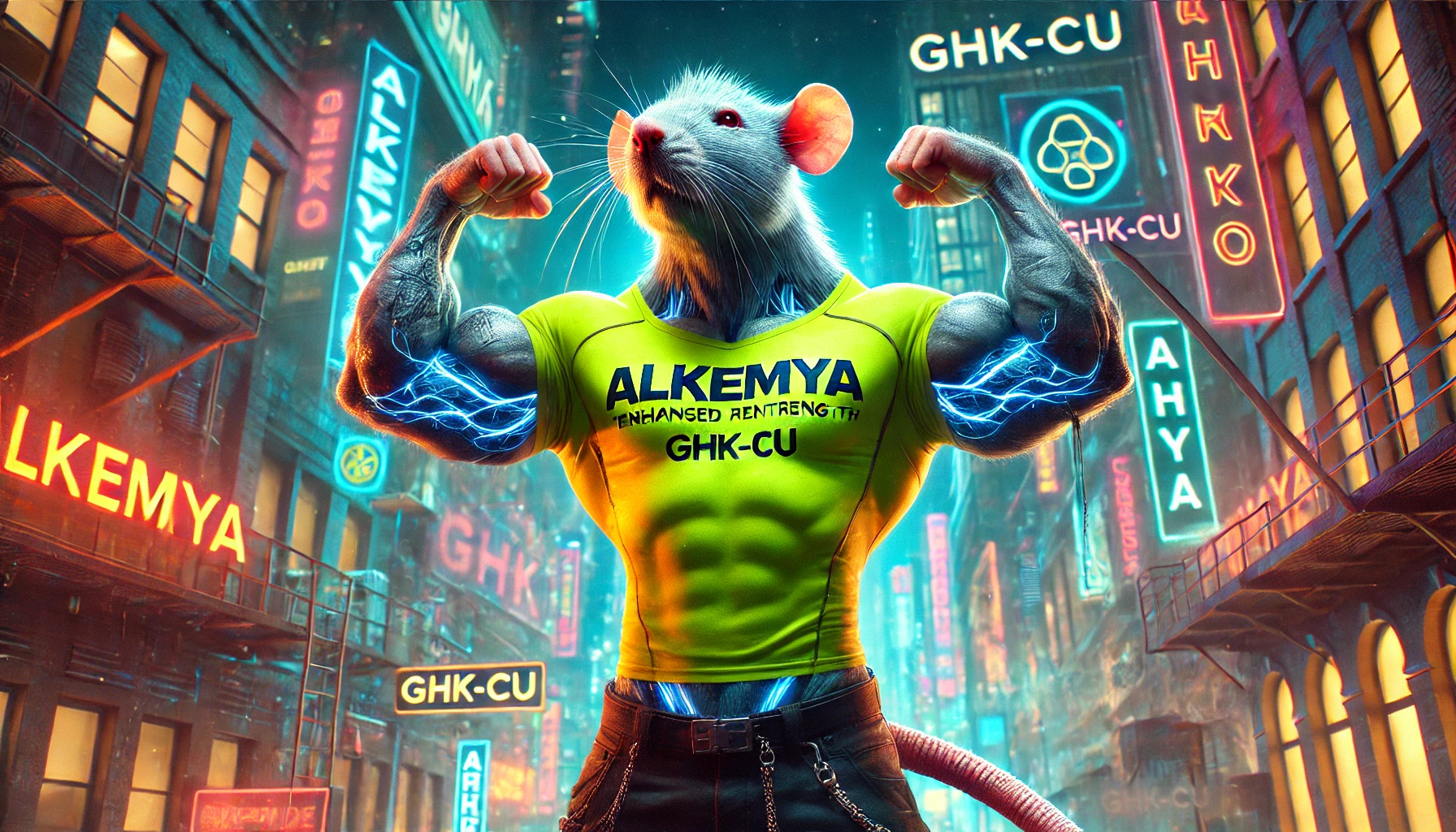
5. Peptide Formats: Vials or Cream?
As mentioned earlier, GHK-Cu is available in two main formats:
Injectable vials (subcutaneous solution): This is the formulation currently available in the Alkemyalabs.com shop. The advantage of subcutaneous injections lies in their ability to deliver rapid absorption and a stronger systemic effect. It’s the preferred format among biohackers and anti-aging experts who follow targeted rejuvenation and intensive care protocols.
Topical cream or serum: Currently not available in our shop, but coming soon. This is the most popular form in the aesthetic field due to its ease of use and ability to target specific areas (such as the face, neck, or back of the hands). However, skin absorption may vary depending on the formulation and the condition of the skin.
Choosing between injections and cream depends on your goals and individual situation.
Those seeking systemic benefits and a stronger impact on collagen synthesis and anti-inflammatory properties may prefer injections. On the other hand, those who want to focus on a localized area and prefer to avoid injections can opt for the cream (once it becomes available).
6. Usage Protocol and Practical Tips
6.1 Important Disclaimer
Before diving into the details of usage protocols, it’s essential to emphasize that the following is not medical advice. Every individual is unique, and dosing protocols should be tailored to one’s health status, medical history, and specific goals. Always consult a qualified professional before starting any new protocol.
6.2 Injectable Protocol (Subcutaneous)
Dosage and frequency:
A common protocol adopted by some anti-aging physicians and biohackers involves injecting 1–2 mg of GHK-Cu daily for a period ranging from 2 to 4 weeks, depending on the intended goals.
More conservative approaches suggest 0.5–1 mg daily for longer cycles (4–6 weeks).
Some professionals recommend alternating usage with rest periods (e.g., 20 days of injections followed by 10 days off) to allow the body to rebalance naturally.
Injection method:
Subcutaneous injection is generally straightforward: it involves using small syringes (like insulin syringes) to inject the peptide under the skin, usually in the abdominal area or other spots with some subcutaneous fat.
If you’re a beginner, it’s advisable to seek guidance from a healthcare provider to avoid dosing errors or hygiene issues.
Storage:
Lyophilized GHK-Cu vials should be stored away from light in a cool, dry place — ideally in the refrigerator (2–8°C), especially after reconstitution.
Always check the manufacturer’s instructions, as peptide stability can vary depending on the formulation.
6.3 Topical Protocol (Cream or Serum)
Dosage and frequency:
Although our shop does not yet offer the cream, once available, topical GHK-Cu is generally applied 1–2 times per day to targeted areas (face, neck, eye contour, etc.).
Some serums are more concentrated and may be used once a day, preferably at night, to allow the peptide to act during rest.
Application method:
After cleansing the skin, apply a thin layer of GHK-Cu cream or serum and gently massage until fully absorbed.
You may then continue with your regular skincare routine (moisturizer, sunscreen in the morning, etc.).
Compatibility considerations:
Most GHK-Cu formulations are compatible with standard cosmetic products, but it’s best to avoid combining them with harsh treatments (e.g., high-concentration exfoliating acids or potent retinoids) to prevent overloading or irritating the skin.
7. Side Effects and Safety
7.1 General Safety
GHK-Cu is generally considered safe and well tolerated, especially when used in moderate doses and according to recommended protocols.
Most studies do not report serious side effects. However, as with any bioactive compound, caution and awareness are essential.
7.2 Potential Side Effects
Irritation or redness: In rare cases, particularly sensitive skin may experience slight redness or tingling. This is usually temporary.
Headaches or dizziness: Some users, especially at the beginning, report mild headaches or light-headedness from injections. These often resolve with dose adjustment or a short adaptation period.
Digestive discomfort: Uncommon, but possible in highly sensitive individuals.
Allergic reactions: As with any peptide or protein, a small percentage of people may experience allergic responses. If this occurs, discontinue use and consult a physician.
7.3 Contraindications
Serious health conditions: Individuals with chronic illnesses or autoimmune disorders should consult their doctor before starting a GHK-Cu protocol.
Pregnancy and breastfeeding: There is insufficient data on safety in these cases, so usage is not recommended.
Drug interactions: No significant interactions with common medications are known, but if you are on specialized treatments (chemotherapy, immunosuppressants, etc.), speak with a healthcare provider.
Source: Safety and potential side effects of GHK-Cu
8. The Experience of Biohackers and Anti-Aging Experts
In the world of biohacking and anti-aging, GHK-Cu is seen as one of the “go-to peptides” for combating the signs of aging, supporting tissue regeneration, and improving both physical and cognitive performance.
Many prominent figures in this space — from independent researchers to functional medicine doctors — have shared their experiences with GHK-Cu-based protocols on their blogs and social channels, often in combination with other strategies like intermittent fasting, NAD+ supplementation, caloric restriction, or balanced hormone therapy.
An interesting trend is the emergence of online communities exchanging data, feedback, and usage tips for GHK-Cu — contributing to a form of “collective research.” However, it’s crucial to remember that not everything posted on forums or social media is scientifically validated, and DIY peptide use carries inherent risks.
It’s always best to rely on credible sources and consult with qualified healthcare professionals.
9. Anecdotes and Fun Facts About Copper (Cu)
Since copper is an integral part of the GHK-Cu complex, it’s worth sharing a few interesting facts about this fascinating chemical element:
Ancient history: Copper is one of the first metals ever worked by humans. Ancient civilizations used it to craft tools and jewelry — unaware it would one day be part of a powerful anti-aging peptide!
Antimicrobial properties: Copper has natural antimicrobial effects; it can kill many bacteria and viruses quickly. For this reason, some healthcare facilities use copper or copper-alloy surfaces to help reduce infection risks.
Color change: The green “patina” (known as verdigris) that forms on copper exposed to moisture and air — like the Statue of Liberty — comes from basic copper carbonate or sulfate compounds. Luckily, with GHK-Cu, there’s no risk of turning into a mini Hulk with a greenish glow!
Copper therapy: Some folk and alternative medicines use copper to treat various ailments (joint pain, rheumatism). While scientific evidence is limited, copper’s beneficial reputation has historical roots.
10. Frequently Asked Questions (FAQ)
10.1 Can GHK-Cu replace collagen powder or other anti-aging supplements?
Not exactly. Collagen powders and other anti-aging strategies often work synergistically. GHK-Cu stimulates the body’s natural collagen production and supports tissue regeneration, but it doesn’t replace a protein-rich diet, vitamin C, antioxidants, and other key nutrients. All these components should be seen as complementary.
10.2 Do I need to use GHK-Cu forever once I start?
Not necessarily. Many protocols follow cyclical usage. Some users notice lasting effects even after stopping, especially when maintaining a healthy lifestyle. However, cumulative benefits may improve with periodic cycling.
10.3 Can I use GHK-Cu with other peptides?
Yes — in the peptide world, combining multiple compounds (e.g., BPC-157, TB-500) is common to maximize regenerative and anti-inflammatory effects. The key is to do so with awareness and professional guidance, respecting safe doses and interactions.
10.4 What’s the best time to inject GHK-Cu?
There’s no universal “best time.” Some prefer mornings for an energizing boost, others opt for evening to support nighttime repair. Preferences vary, and personal tolerability often guides the decision.
11. What Might the Future GHK-Cu Cream from Alkemyalabs Look Like?
While we can’t reveal everything just yet (surprise!), we can share a few likely features of the upcoming Alkemyalabs GHK-Cu cream:
Optimized GHK-Cu concentration: Based on the latest research to ensure maximum penetration and efficacy.
Gentle formulation: Suitable for sensitive skin, free from parabens, harsh silicones, or irritating fragrances.
Airless packaging: To protect the peptide from air and light degradation.
Versatile use: Suitable as a day or night cream, or as a serum layer beneath other products — depending on personal preferences.
12. Final Thoughts
GHK-Cu isn’t just a weird acronym to impress people at a mad scientist party — it’s a molecule packed with promise. From clinical research to biohacking blogs, more and more voices are confirming its benefits for skin health, hair vitality, and overall tissue regeneration. Its ability to modulate inflammation, stimulate collagen synthesis, and influence gene expression makes it a compelling ally in many anti-aging strategies.
That said, like any innovation in health and wellness, it must be approached responsibly. Before starting a GHK-Cu protocol — especially the injectable form — it’s always wise to consult a doctor or qualified practitioner, consider pre-existing medical conditions, and monitor how your body responds.
As for us, while we await the launch of our GHK-Cu topical cream, we’re proud to offer the injectable version in our shop — designed for those following specific subcutaneous injection protocols and looking to harness the peptide’s systemic effects.
As research evolves, we’ll keep you informed of new findings and updates to the most effective usage protocols.
13. References and Useful Links
Study on GHK-Cu and gene modulation
[See source] – In-depth look at how GHK-Cu influences gene expression and tissue regeneration.Review on dermatological effects of GHK-Cu
[See source] – A comprehensive overview of its skin applications and collagen-boosting properties.Research on GHK-Cu safety
[See source] – Analysis of potential side effects and safety profile.GHK-Cu and anti-aging potential
[See source] – Study illustrating the connection between GHK-Cu, increased collagen synthesis, and wrinkle reduction.
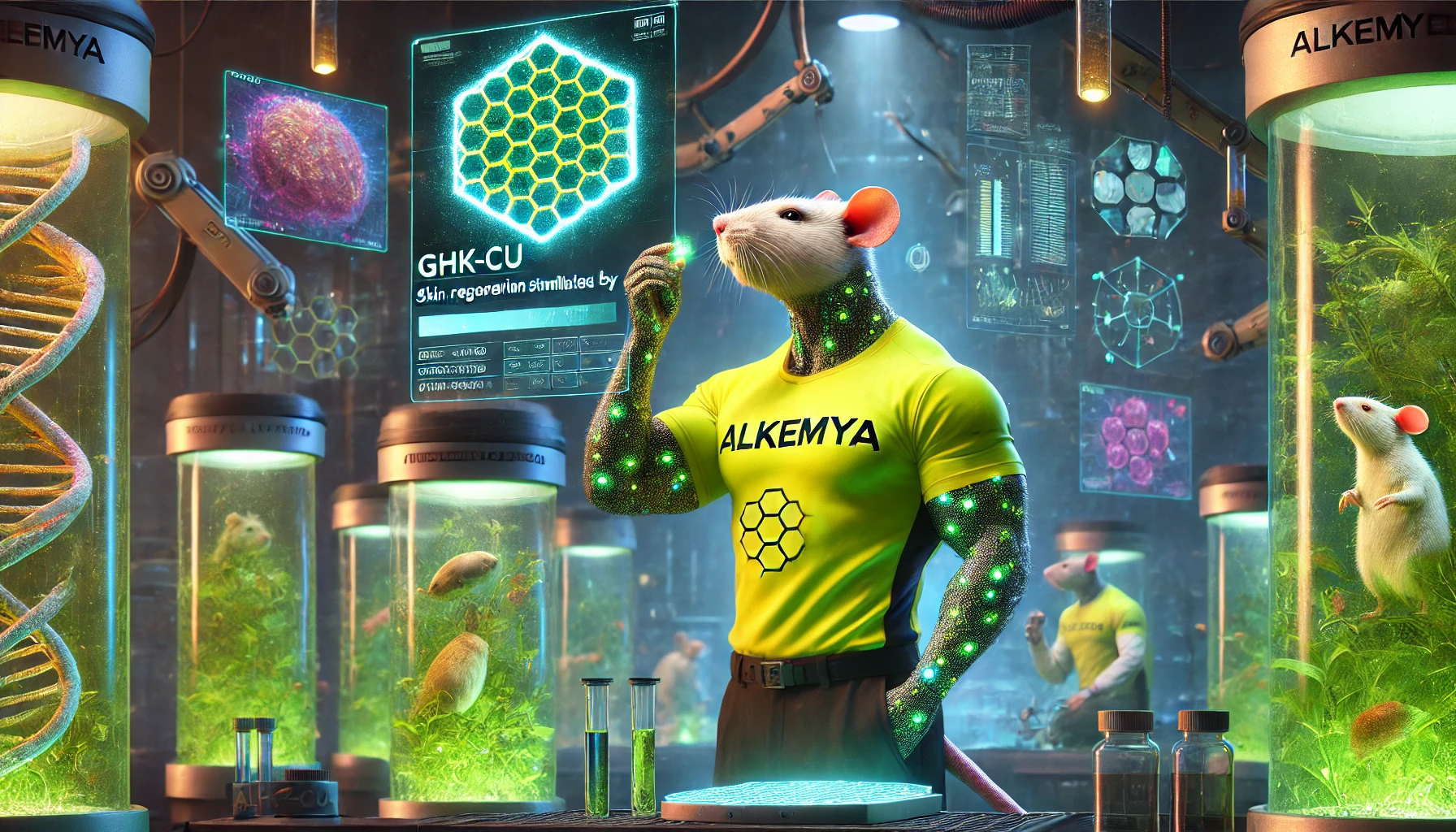
14. Disclaimer
The information provided in this article is for educational purposes only and is not intended to replace the advice of a physician or any other qualified healthcare professional. The use of any peptide, including GHK-Cu, should be discussed with a professional — especially if you have pre-existing medical conditions or are taking medications.
Alkemyalabs.com disclaims all responsibility for the misuse of the information contained in this article.
15. Conclusion: The Power of a Small “Anti-Age” Peptide
In a world that’s constantly searching for the “Holy Grail” of anti-aging, GHK-Cu stands out as a key player.
We’re not talking about a magic cream or a miracle elixir that will turn you twenty again with a single drop — GHK-Cu is a powerful tool, but one that must be used wisely and integrated into a lifestyle that prioritizes healthy nutrition, regular exercise, quality sleep, and proper stress management.
If you’re curious about this peptide and eager to try it, you can already find the injectable version in our shop at Alkemyalabs.com, along with expert guidance for proper use.
And if injections aren’t your thing — don’t worry! Our topical GHK-Cu cream is coming soon, designed for daily, easy, and comfortable use as part of your anti-aging routine.
Until then, keep following us on the blog and our social channels — we’ll keep diving into the world of this extraordinary peptide, as well as other cutting-edge compounds for longevity and wellness.
Because science is moving fast — and we’re here to share it with passion, a touch of humor, and a whole lot of innovation.
In-depth article curated by the Alkemyalabs.com Team
